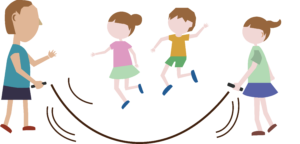Children’s levels of manual dexterity, muscular coordination, and agility vary substantially. Some kids naturally struggle more than others to complete delicate tasks that need for exact hand-eye coordination, such tying shoelaces, and may appear helpless to stop themselves from tipping over objects. It is quite improbable that such clumsiness, which is virtually always present from birth, is an indication of an underlying illness. Yet, very rarely, a nervous system or muscular disease may be the cause of extreme clumsiness or the rapid emergence of clumsiness in a youngster who had previously been well coordinated.
Developing physical and manual skills
During their first weeks of life, children learn how to manage their bodies. Kids quickly pick up abilities like maintaining eye contact with a moving object and grabbing a toy that is held out to them. Some kids pick up on these skills far faster than their peers. But throughout childhood, you can give your child as many opportunities as you can for a variety of physical activities to assist him or her develop muscular coordination and manual dexterity to the best of their natural ability.
Athletic ability
Running, jumping, and hula hooping are all physical abilities that a toddler is learning that will help him when he gets older to be good at sports and games. For youngsters who are clumsy, swimming is a very effective type of exercise. Also, playing ball will aid develop hand-eye coordination and offer opportunities for intense physical activity.
Little children like dancing because it helps them learn how to sync their motions with the beat of the music. Ballet and other structured dance styles help enhance balance, physical grace, and agility.
Synchronizing eye and hand
Most toddlers like the game of using a hammer to pound pegs into a frame. Also, it helps to develop hand-eye coordination, which will eventually assist your child acquire more difficult manual skills like sewing and woodworking. Similar to this, using crayons to scribble on scrap paper is a crucial step in the development of the finer manual skills required for writing and drawing. Jigsaw puzzles with large pieces, toy telephones, and building blocks and containers are some toys that are particularly useful for hand-and-eye coordination.

